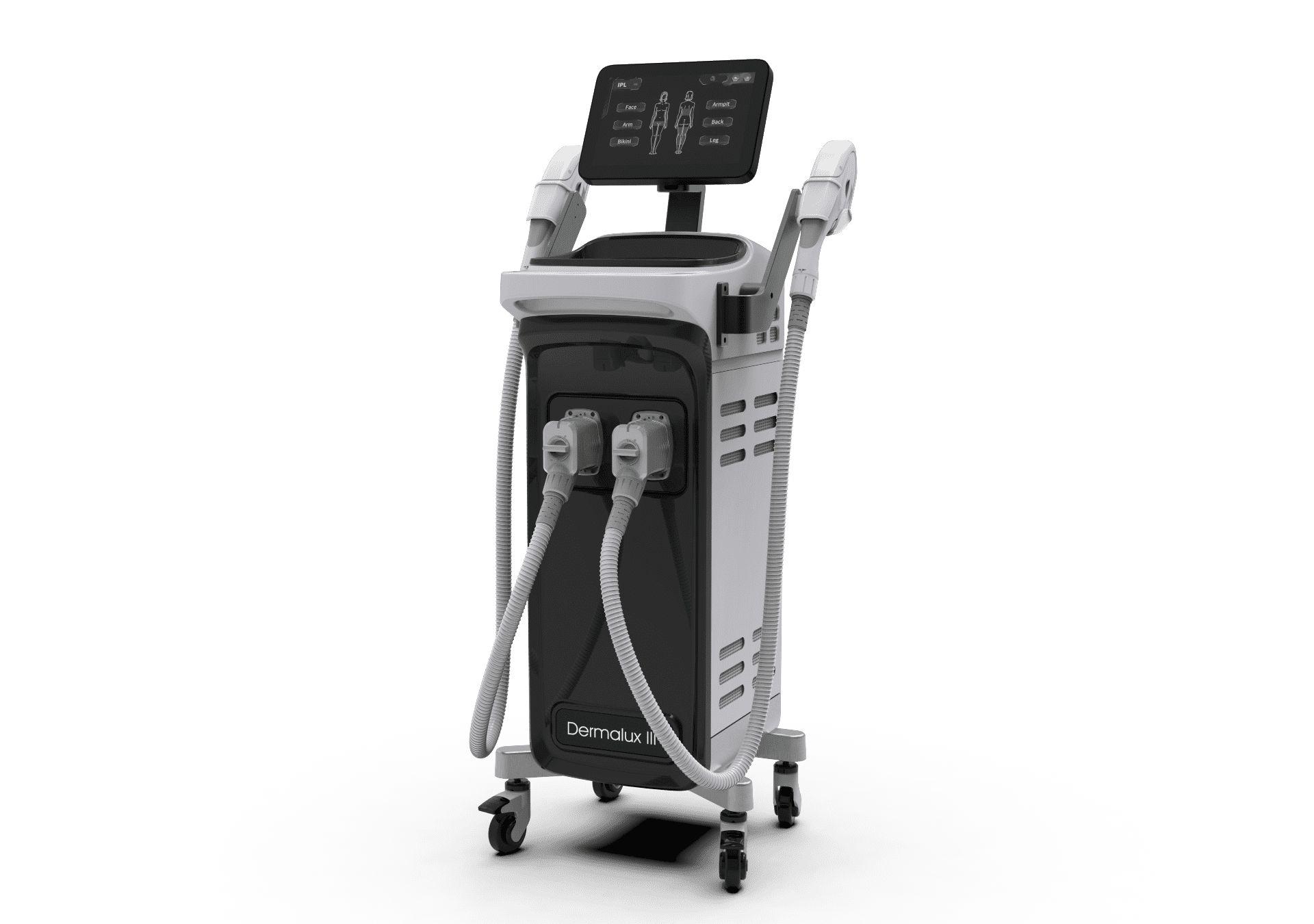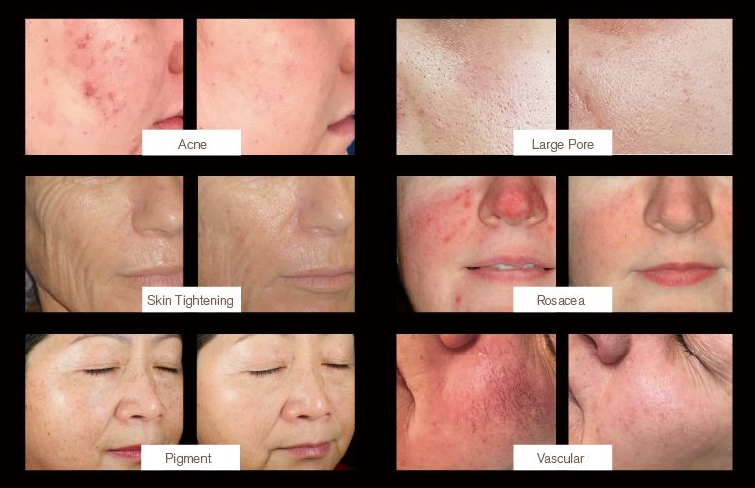In the pursuit of flawless skin, Photon Rejuvenation(IPL)has become a favorite among many skincare experts and celebrities in recent years. This beauty treatment using strong pulsed light technology is claimed to fade pigmentation, shrink pores, improve redness, and even stimulate collagen regeneration, restoring youthful radiance to the skin. However, many people can’t help wondering whether IPL is a milestone of skin care technology or an over packaged “beautiful foam” in the face of dazzling publicity and online popularity? Is its skin rejuvenation effect as magical as it is said to be? In principle, IPL penetrates the surface of the skin with specific wavelength of light energy, selectively acting on the pigments or vascular problems , while promoting deep collagen remodeling.
Clinical studies have shown that IPL can indeed bring visible improvements to problems such as superficial pigmentation and mild photoaging. However, it is worth noting that the effect varies from person to person, factors such as skin type, operating techniques, postoperative care, etc. may all affect the final outcome. More importantly, IPL is not a magic of “one click beauty”, but a gradual care that needs to be carried out according to the treatment course. So, is it worth investing time and money in? Let’s seek answers from science and real-life experience.

An Comprehensive Overview of IPL
Photos are actually a type of intense pulsed light that illuminates the surface of the skin. They can penetrate deep into the skin and selectively act on subcutaneous collagen. Causing chemical changes in the molecular structure of collagen fibers and elastic fibers in the dermis, restoring their original elasticity. Producing sufficient collagen molecules thickens collagen tissues, enhances skin elasticity, and improves skin texture, restoring fairness, delicacy, and elasticity. In addition, the photo thermal effect it produces can enhance vascular function, improve circulation, and achieve the effect of eliminating wrinkles and shrinking pores.

Five Key Functions of IPL: Why Has It Become A Industrial Benchmark?
- Helps fade pigmentation and brighten skin tone.
Through the principle of selective photothermal action, the pigment particles on the surface of the skin instantly explode after absorbing photon energy, and form scabs and fall off with the replacement of the skin. Most superficial pigmentation such as freckles and sunspots can be significantly reduced after 3 to 5 treatments.
- Helps to seal blood vessels and reduce sensitivity
Photons can be selectively absorbed by oxidized hemoglobin in blood vessels, producing strong photothermal effects that gradually close dilated capillaries. It can to some extent improve skin redness problems such as red blood streaks, sensitive skin, rosacea, acne scars, etc..
- Helps reshape collagen and delay aging.
It can produce photothermal and photochemical effects on skin tissue, rearranging collagen fibers and elastic fibers in the deep layers of the skin, thereby improving fine lines, fine pores, and other skin rejuvenation effects.
- Repairing sensitive skin
IPL can stimulate fiber increase, promote skin metabolism, and repair the skin barrier.
- Hair removal
After absorbing the energy of photons, melanin in hair removal causes deep hair follicles to heat up, destroying hair follicles and surrounding stem cells, thus achieving the effect of hair removal.

Why Choose IPL? Key Benefits for Flawless Skin
Non invasive and fast recovery: After treatment, there is only a brief redness, which usually subsides within 24 hours and does not affect daily activities.
Comprehensive improvement: One machine with multiple effects, simultaneously solving multiple problems such as color spots and red blood streaks.
Long term benefits: The combination of treatment courses can accumulate and stimulate collagen, delaying aging.
Wide applicability: Suitable for most skin types (including sensitive skin that require energy reduction).
Caution: IPL Treatment Is Contraindicated For Some Individuals
Yellow brown spots, especially those in the active stage, are easily stimulated by light and electricity, which may make the spots deeper or even larger in size.
Dark skin with darker skin color should not be easily treated with photons, as patients with dark skin may face the risk of excessive pigmentation after inflammation after receiving laser and intense pulsed light therapy. Therefore, if the skin color is very dark, it is not recommended.
After the skin is exposed to sunlight, melanocytes are very active. If photon skin rejuvenation is done immediately, it will stimulate the production of more melanin and easily burn the skin, leading to large scabs and blisters. Therefore, it is recommended to undergo photon rejuvenation treatment 2 weeks or even 2 months after tanning. During this period, skin repair and hydration work can be done first.
Patients with photosensitive skin diseases may experience redness and itching of their skin after exposure to sunlight, and it is not recommended to resort to photon therapy lightly.
Q&A
Q: Does IPL therapy hurt? How long does the process take?
A: There may be a slight stinging sensation during the treatment process, but it can be tolerated. The first treatment may be the most painful, but with the improvement of pigmentation and red blood streaks, as well as the gradual tolerance of the skin, the feeling of pain during the treatment process will become lighter and lighter. The single treatment process takes about 15 minutes.
Q: How often is it better to do IPL?
A: Generally speaking, if it is due to treatment needs, it is recommended to treat once a month for the first 3 months, and then treat once every 1-3 months depending on the actual situation; If it is for skin maintenance needs, it is generally recommended to do it once every 2-3 months.
Q: How long does the effect of one IPL treatment last?
A: The effect of one IPL treatment can generally last for 2-3 years, but the essence of IPL rejuvenation is symptomatic improvement, which cannot be achieved once and for all, let alone rejuvenate a person. After all, skin care is not a one-time process, but a comprehensive process of daily care, such as reasonable diet, sufficient sleep, and maintaining a happy mood.





